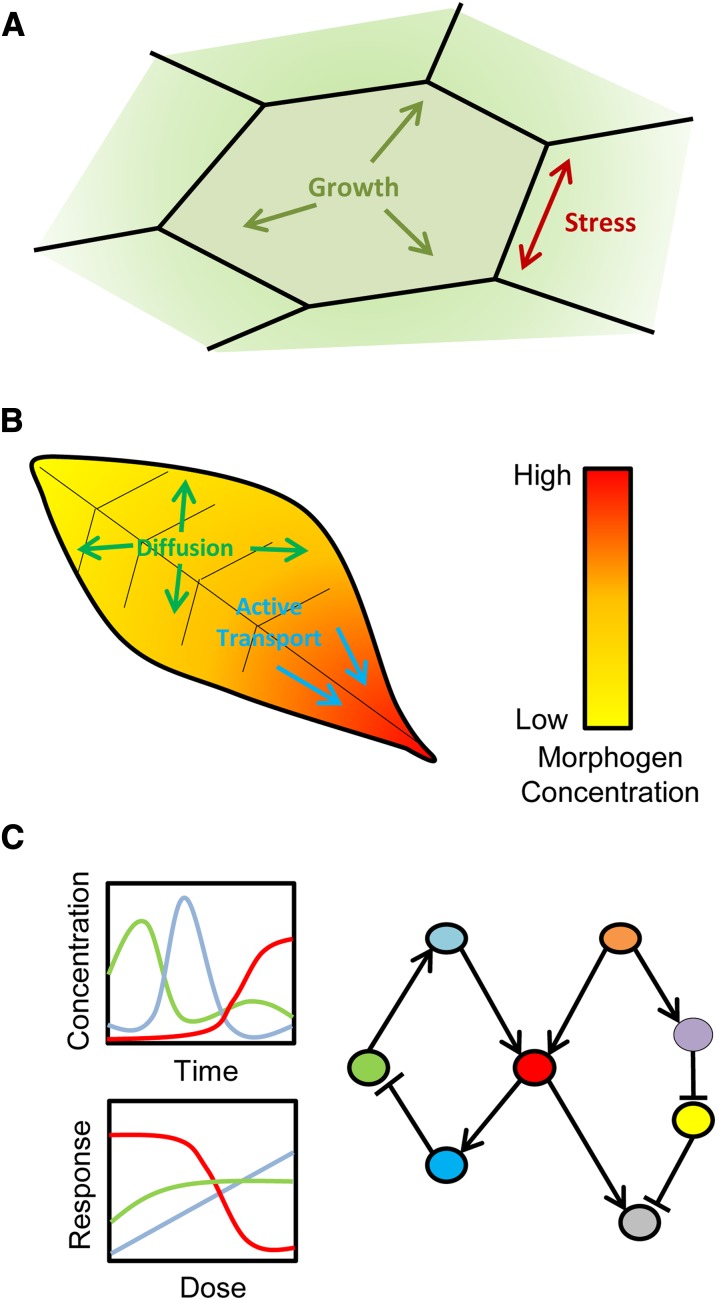Figure 4.
Modeling Plant Development and Morphology.
(A) Cell geometry, growth, expansion, and division place physical constraints on any model of plant organ morphogenesis. Models that consider only the implications of these constraints on plant growth have in some cases been able to suggest simple physical mechanisms for complex organ morphologies.
(B) Spatial distributions of morphogens (such as auxin) underlie many developmental processes. Models of active transport and diffusion of these factors allow the mechanisms of pattern formation to be investigated.
(C) Analysis of dose–response curves generated from both quantitation and model simulation are often useful in revealing the regulatory network of a system. Spatial models of gene and signaling networks allow hypotheses concerning the molecular mechanisms of morphogenesis to be investigated and potentially linked to models of other scales.

